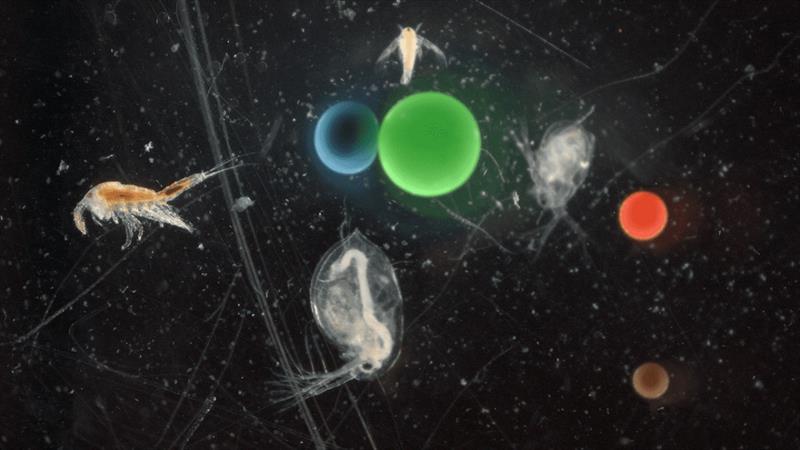
WHOI shares details on microplastic detection project
by The Woods Hole Oceanographic Institution 20 Jan 2022 10:24 UTC

A microscope image of biological specimens used alongside similarly sized microplastic beads. The organisms pictured here are all crustaceans © Beckett Colson
Microplastics are tiny plastic pieces that can be found in the ocean and atmosphere. Scientists' current understanding of microplastics is that they are widespread globally, but the impact they have on ecosystems and humans is largely unknown. Current technologies for identifying microplastics are also limited, but a project led by Woods Hole Oceanographic Institution's Chemical Sensors Lab is moving researchers closer to an in-field microplastics sensor that measures the amount of plastic particles in water.
WHOI is joining co-development technology company Triple Ring Technologies on the next phase of the project, designing and engineering the fieldable sensor. The sensor's technology was developed in the lab of Anna Michel, WHOI associate scientist and National Deep Submergence Facility chief scientist with Massachusetts Institute of Technology/WHOI Joint Program student Beckett Colson. Under the direction of Dr. Sheila Hemami, Senior Director of Growth Initiatives at Triple Ring Technologies, the project will be taken from a benchtop demonstration to a fully fieldable unit. The goal is for the sensor to be operational and locally deployable sometime in late 2022. Support for this technology development is being provided an Environmental Protection Agency grant to Triple Ring Technologies.
"We're confident that this fieldable sensor will offer a widespread assessment of microplastic pollution in waterways, wastewater, storm water, and other areas where microplastics could be a concern," explained WHOI's Michel. "The role of plastics in the global health of the ocean remains unclear, and this collaborative research centers around the theme of using technology to quantify and identify ocean plastics. Specifically, the team is interested in the weathering of plastics, on land and in the ocean, and to metal adsorption onto plastics found on global beaches."
As a prerequisite to the in-field system, the team developed an impedance sensor that can identify if a particle in a fluid flow is a plastic or a biological material. This is one of the first demonstrations of flow-through counting and sizing of microplastics with differentiation of plastic and biological materials, leading the way for real-time microplastics detection and enabling microplastics measurement and data collection in different bodies of water. To date, there is no instrument that can be deployed in the field for microplastics detection, and the next step is to develop such an instrument to understand exactly how many microplastics are entering our waterways, oceans, and drinking water.
A key goal in this research is to move the existing laboratory-based system to a system that works in the field, first as a hand portable system that can be used for pond and lake surface water research and then to one that can be used for surface water analysis of ocean waters and then finally to one that is submersible and could be deployed on underwater vehicles. This will greatly open scientists' ability to quantify microplastics in the ocean.
"Our overall goal is to develop a low-cost sensor that can be broadly scalable. It would allow global communities to have access to accurate measurements of microplastics, allow scientists to have a robust method for counting microplastics in water bodies, and allow researchers to have a better sense of the extent of microplastic pollution," said Michel.
In addition to helping scientists to study microplastics in bodies of water (ocean, pond, river, lake), the sensor could be used for quality control—for example, to quantify the number of microplastics found in drinking water or wastewater. The team envisions a future possibility that drinking water standards will include limits of microplastic content.
"The fieldable unit that we are developing will fill a significant unmet need in environmental sensing, enabling rapid, low-cost microplastic measurements in support of data-driven mitigations for plastic pollution. We are excited to be leading the way with WHOI on this effort," said Dr. Hemami.
Additional funding that has been supporting this research at WHOI includes the Richard Saltonstall Charitable Foundation, the Wallace Research Foundation, the Gerstner Family Foundation, and the Harrison Foundation.